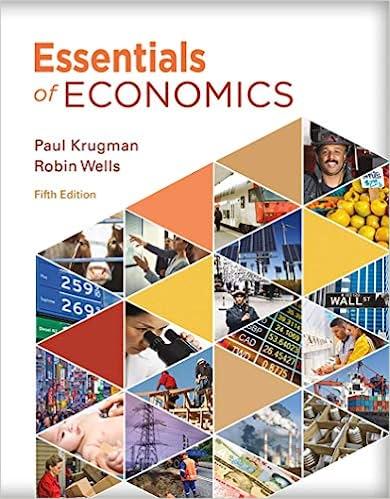In 2016, Stinson Dean faced a critical decision. A savvy trader employed by a firm that traded
Question:
In 2016, Stinson Dean faced a critical decision. A savvy trader employed by a firm that traded lumber as a commodity, Dean could see that the lumber market was ripe for a dramatic upswing as the home construction industry recovered from the housing bust. Yet to personally profit from that upswing, he would have to quit his job and open his own firm.
But becoming an entrepreneur carried significant risk. By going out on his own, he would have to sacrifice the employer-provided health insurance that covered him, his wife, and their three young children. In making his decision, Dean declared: “One of the things I wasn’t willing to risk was the health of my family.” In fact, the tendency of workers to stay in a job that they would rather leave for fear of losing their health care benefits is so pervasive that economists have a term for it: job lock.
In the end, Dean made the jump because he was able to purchase affordable health insurance for himself and his family through the ACA. And the move paid off as the surge in home construction boosted Dean’s business far beyond his expectations. In fact, business was so good that, by 2017, Dean wanted to expand and hire three or four new people.
However, by that time Congressional threats to repeal the ACA generated a stumbling block not only to his expansion plans, but to his future as an entrepreneur in the long run.
“What that’s doing for me is preventing me to convince folks who are in a similar situation to where I was—a nice corporate job, making good money, with great benefits, with kids—
convincing them to leave that to come to work for me with no benefits,” he says. As a result, in 2017, Dean was having trouble convincing others to take a chance and come work for him.
Moreover, he wondered whether he would eventually be forced to close his firm and resume his corporate job in order to assure health insurance for his family.
Questions:-
1. A recent study of employees with chronic health conditions who have employer provided health care coverage found that these workers were 40% less likely to leave their jobs than similar employees without chronic health conditions. A RAND Corporation study found that making health insurance more accessible to individuals could increase self-employment and entrepreneurship in the United States by a third. What pattern would you expect to see in the size and number of newly created companies after the implementation of the ACA compared to before?
2. Historically, small businesses and entrepreneurs have been more innovative than larger companies. What does this imply for the rate of innovation in the United States before implementation of the ACA? After? And what would you expect now that the ACA has come under threat?
Step by Step Answer:






